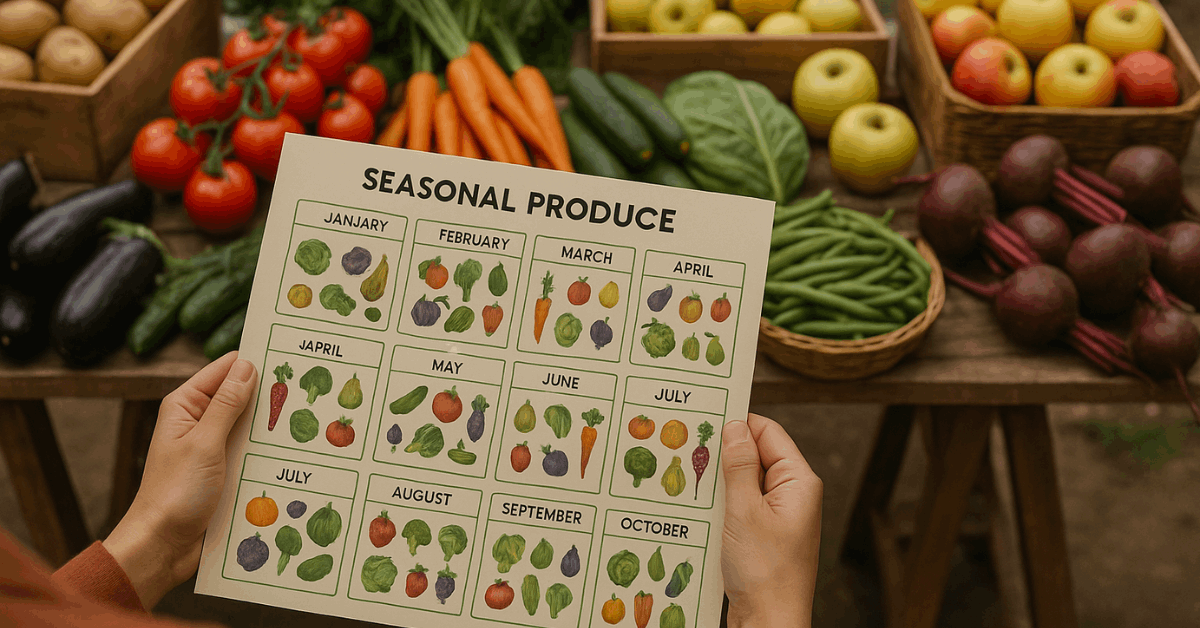Groceries often take a big share of your monthly budget. Managing this expense properly can bring noticeable savings and help you plan better.
With a few simple adjustments, you can reduce waste and still eat well. Here are practical ways to lower grocery costs without sacrificing quality or nutrition.
Tips to Lower Grocery Costs Each Month
Groceries can take up a large portion of your monthly expenses. By adjusting your shopping habits and planning better, you can save money while maintaining food quality.

Create a Realistic Grocery Budget
A clear budget keeps you in control of your grocery spending. It prevents overspending and teaches you how to prioritize essentials.
Track Monthly Spending
Track every grocery purchase for at least one month to understand your spending behavior. Use budgeting apps or spreadsheets to see where most of your money goes.
Identifying your habits helps reduce waste. This data gives you a solid starting point for setting limits.
Set a Weekly Limit
Divide your total grocery budget into weekly portions to stay consistent. Having a limit keeps your spending balanced and predictable.
Using cash or a debit card helps avoid impulse purchases. Consistency ensures long-term financial control.
Plan Meals Ahead of Time
Meal planning ensures every grocery item has a purpose. It helps you prepare smarter and waste less food.
Make a Weekly Menu
Base your meals on what’s already in your pantry or refrigerator. Choose recipes using seasonal ingredients since they’re cheaper and fresher.
Write your menu before shopping to avoid unnecessary items. This habit ensures balanced and cost-effective meals.
Cook in Batches
Cooking in batches saves both time and money. It reduces energy use and the need for multiple store visits.
Store cooked meals properly in the fridge or freezer. This keeps you ready for busy days without resorting to takeout.
Shop Smart with a List
A shopping list prevents impulse buying and unplanned expenses. It also makes shopping faster and more efficient.
Organize Your List by Aisles
Group similar items like dairy, produce, and grains together. This helps you move efficiently through the store and avoid distractions.
A structured list keeps you focused on necessities. Organized shopping saves both money and time.
Avoid Impulse Buys
Avoid shopping while hungry or tired since this increases unnecessary purchases. Focus on essentials first and reconsider extras later.
Review your cart before checkout to stay within your budget goal. Self-control at the store leads to consistent savings.
Compare Prices and Use Discounts
Comparing prices, discounts, and loyalty offers ensures you always get value for your money. Many stores now provide apps to make this simple.
Use Store Apps and Loyalty Programs
Download store apps that give cashback, coupons, or points for regular purchases. Check promotions before visiting the store.
Accumulate points over time for future discounts. Using these programs consistently builds long-term savings.
Shop During Sales or Off-Peak Hours
Shopping during midweek sales or less busy hours often yields lower prices. Avoid weekends when prices can be higher.
Always verify expiration dates to avoid waste. Take advantage of clearance discounts when possible.
Buy Generic and Store Brands
Generic or store brands often have the same quality as name brands at a fraction of the price. Switching gradually helps you find products that meet your standards.
Focus on Basic Staples
Buy store-brand versions of rice, sugar, flour, and pasta. Test small packages to confirm taste and performance.
Once satisfied, stick to these brands for long-term savings. Over time, you’ll notice a meaningful drop in grocery expenses.
Take Advantage of Bulk Buying
Bulk purchasing benefits families who use items frequently. It’s cost-effective when done strategically.
Know When Bulk Works
Focus bulk purchases on non-perishable goods like grains, cleaning products, and toiletries. Avoid perishable items that spoil quickly.
Always compare unit prices to confirm savings. Track consumption to prevent overbuying.
Use Membership Stores Wisely
Stores like Costco and Sam’s Club offer lower prices for members. Make sure the savings outweigh the membership fee.
Combine shopping with friends or family to share bulk items. This spreads out costs and reduces waste.
Use Coupons and Cashback Apps
Modern cashback and coupon apps can quickly lower grocery bills. Combining multiple offers increases savings even more.
Digital apps connect you with store promotions and online rebates. Regular use ensures a steady return on your usual purchases.
- ShopBack, Rakuten, or Fetch Rewards offer cashback for partner stores.
- Coupon websites give discounts on snacks and pantry items.
- Stack multiple promotions to double your rewards.
- Track total savings within the app monthly for motivation.
Reduce Food Waste at Home
Food waste quietly drains your monthly grocery savings. Learning proper storage and reuse techniques helps minimize loss.
Store Food Properly
Use airtight containers to keep dry foods fresh longer. Keep refrigerated items at the right temperature.
Label food by date and rotate stock. Proper storage extends freshness and avoids costly spoilage.
Repurpose Leftovers
Turn leftovers into creative meals instead of throwing them away. Use vegetable scraps for soups or rice for fried rice.
Compost what can’t be reused. Reducing food waste helps you get more from every peso spent.
Shop Seasonal and Local
Buying seasonal and local produce offers the best combination of price and freshness. It also supports community markets.
Visit Farmers’ Markets
Farmers’ markets sell freshly picked produce at lower prices. You can negotiate better deals for bulk purchases.
Buying direct means no middleman markups. This approach helps your wallet and local growers.
Know Seasonal Produce
Research your region’s harvest calendar to know when products are cheapest. Build your weekly menus around these options.

Fresh, seasonal ingredients bring both quality and savings. It’s a win-win for nutrition and budgeting.
Pay Attention to Unit Prices
Understanding unit pricing is key to identifying real value. It prevents misleading deals based on packaging.
Check Shelf Labels
Check the price per kilogram or liter to compare accurately. This shows which brand or size is the best deal.
Building this habit takes seconds but brings consistent savings. The more you compare, the smarter your choices become.
Shop Online or Use Delivery Services
Online grocery shopping helps you monitor total spending before checkout. It also limits exposure to in-store temptations.
Compare Online Prices
Online stores often post exclusive flash sales or delivery discounts. Use filters to rank items by lowest price.
Watch your total cost as you shop. This transparency improves spending control and planning.
Take Advantage of Free Delivery Offers
Plan larger orders to qualify for free delivery. Combine purchases with friends or relatives to reach the minimum requirement.
Saving on transport or fuel costs adds up quickly. Convenience and savings make this method worthwhile.
Practice Minimalist Shopping
A minimalist approach to groceries means buying only what’s needed. This habit strengthens discipline and reduces clutter.
Stick to Essentials
Focus on versatile staples like rice, eggs, and vegetables. Avoid deals that push unnecessary items.
Minimalist shopping keeps both your pantry and wallet lighter. The less you buy, the more you save over time.
Conclusion: Take Control of Your Grocery Spending
Lowering grocery costs starts with planning, discipline, and awareness. Every small change compounds into real monthly savings.
Using these methods helps you buy smarter and spend wiser. Start today and enjoy a lighter grocery bill next month.











